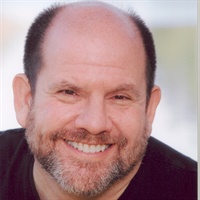CC12 Workshop 14 – Focusing on Deficits in Couple Therapy: The PACT® Methodology – Stan Tatkin, PsyD
- Average Rating:
- Not yet rated
- Topic Areas:
- Workshops | Psychobiological Approach to Couples Therapy (PACT) | Couples Therapy | Mindfulness
- Categories:
- Couples Conference | Couples Conference 2012 | Pioneers in Couples and Family Therapy
- Faculty:
- Stan Tatkin, PsyD, MFT
- Duration:
- 1:51:28
- Format:
- Audio Only
- Original Program Date:
- Apr 29, 2012
- License:
- Never Expires.
Description
Description: This workshop explores how social-emotional deficits like alexithymia, affect blindness, and poor theory of mind disrupt co-regulation and erode relational security. Tatkin offers practical tools for assessing such deficits, distinguishing them from defenses, and guiding couples toward clearer emotional signaling, mutual understanding, and more accurate attribution under stress.
Syllabus Description: Deficits such as affect blindness, alexithymia, and poor theory of mind will likely lead to mutual dysregulation in couples during periods of distress or threat and is the driving force behind relationship dissatisfaction and dissolution. This workshop will introduce attendees to the most common social-emotional deficits and will demonstrate how to identify these deficits and what to do about them in couple therapy.
Educational Objectives:
- Write and describe at least four social-emotional deficits commonly found in couple therapy.
- Apply at least one intervention for dealing with each deficit.
*Sessions may be edited for content and to preserve confidentiality*
Credits
Handouts
| Ericksonian Learning Snapshot (277.7 KB) | 2 Pages | Available after Purchase |
Faculty

Stan Tatkin, PsyD, MFT Related Seminars and Products
Stan Tatkin, PsyD, MFT, is a clinician, researcher, teacher, and developer of A Psychobiological Approach to Couple Therapy (PACT®). He has a clinical practice in Calabasas, CA, where he has specialized for the last 15 years in working with couples and individuals who wish to be in relationships. He and his wife, Tracey Boldemann-Tatkin, developed the PACT Institute for the purpose of training other psychotherapists to use this method in their clinical practice.


